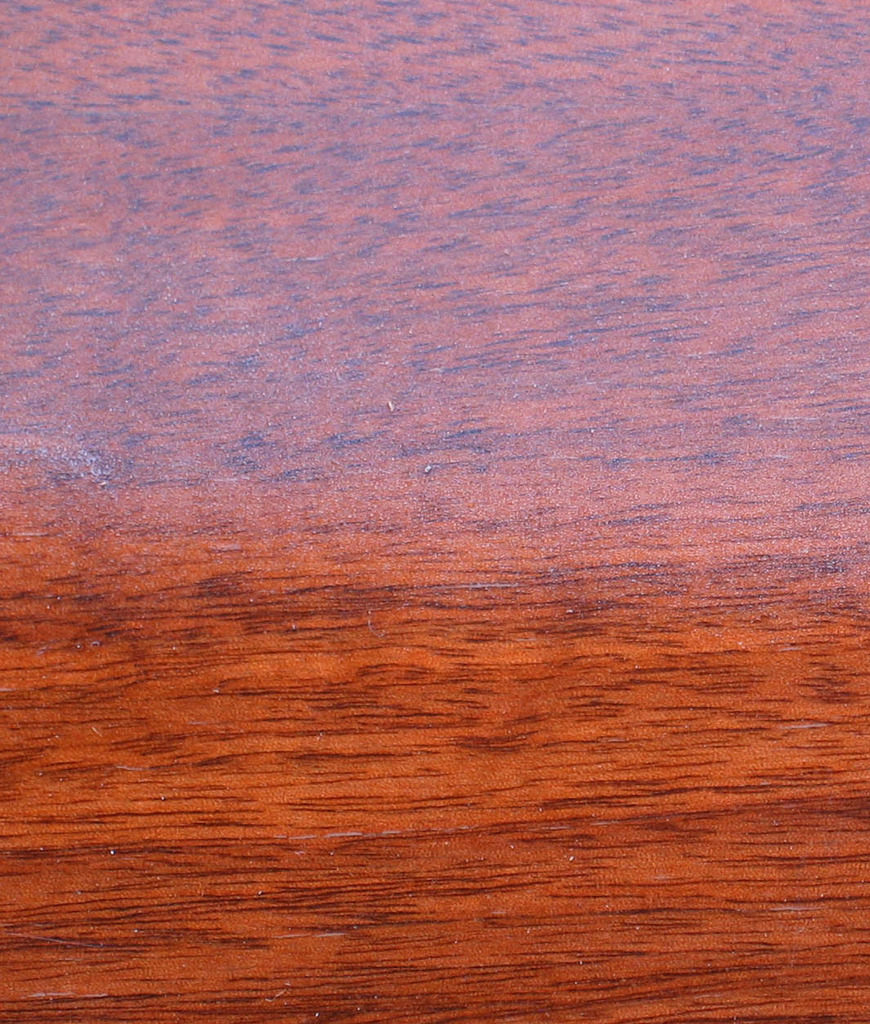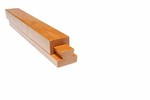We may receive a commission when you use our affiliate links. However, this does not impact our recommendations.

The top half of this panel shows what serious dry spray looks like. I have not been successful at photographing the typically lesser amounts of dry spray that occur inside a cabinet.
If you have ever sprayed the inside of a cabinet, or even a deep drawer, with a fast-drying finish such as lacquer or catalyzed lacquer, you have surely experienced dry spray settling on the surface and causing it to feel rough. The bounce back and turbulence created by the force of the spray keeps the finish particles in the air so long that the finish on the surface has already set up before all of the particles land. And when they do land, they stick to the surface, but they don’t dissolve into the existing finish.
The problem is reduced with HVLP and especially with turbine HVLP because there is so much less force creating bounce back. But in the confined space of a cabinet there’s still almost always some dry spray and some roughness.
I’ve often seen instructions to avoid spraying directly into corners in order to avoid the dry spray. Instead, spray the two surfaces that join to form the corner. In other words, make the solution one of spraying technique. But I’ve never found this to work well.
If you think about it, the real cause of the problem is the fast drying of the finish. Slower-drying finishes, such as varnish and water-based finish rarely, if ever, have a dry-spray problem. So the better trick for avoiding dry spray on the insides of cabinets is to slow the drying of the lacquer or catalyzed lacquer by adding a retarder. This keeps the surfaces wet longer, so the dry spray has time to settle and dissolve in, leaving a smooth feel.
You have to be careful, of course, not to retard too much or you’ll have difficulty avoiding runs and sags. So be observant.
Here are some supplies and tools we find essential in our everyday work around the shop. We may receive a commission from sales referred by our links; however, we have carefully selected these products for their usefulness and quality.








